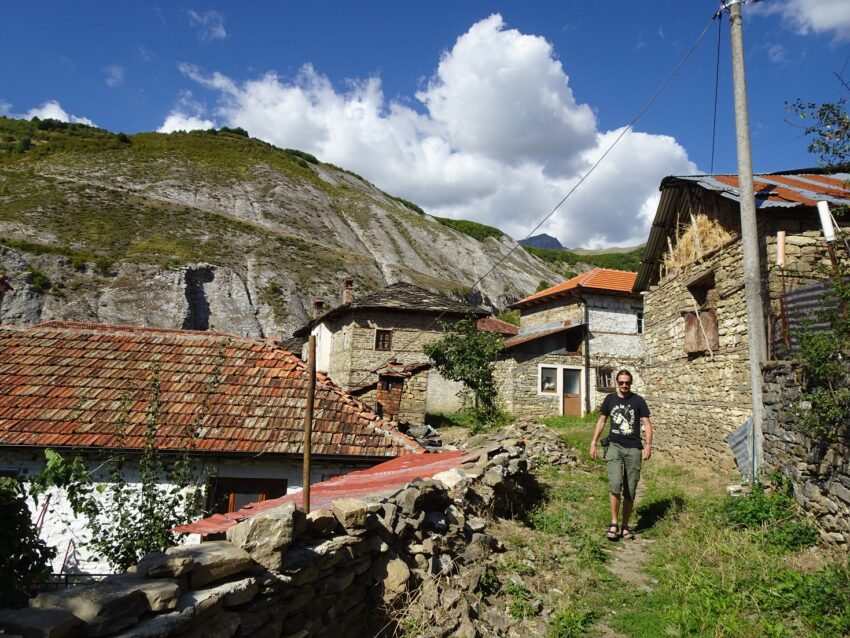Albania might look tiny on a map, but on our recent visit, we quickly realized that it’s a super diverse country with lots of amazing landscapes, and that you definitely need to bring some time to really do it justice.
The part that really blew us away was the beautiful northern half of the country and we could have easily spent several weeks here alone, exploring the peaks, waterfalls and hidden mountain valleys of the area.
A lot of the destinations are quite remote and if you don’t want to spend the majority of your time driving serpentine mountain roads, I highly recommend spending at least 10 days in the northern half of Albania.
This itinerary combines our favourite spots in northern Albania, circling from Tirana via Shkodër to the somewhat remote mountain valleys of Theth and Valbonë, across Lake Koman, up Mount Korab and back to Tirana.
This post may contain affiliate links, and I might earn a small commission at no additional cost to you. For more info, click here.
How to Get Around in Albania
This is a trip where we were really glad to have a car of our own and considering the still affordable rental rates, I really recommend getting one for some extra flexibility and to be able to visit some more remote places.
While there’s a good public bus network in the country, buses don‘t go to all the places that I’ve mentioned here (e.g. Mount Korab Nature Park) and if they do, they’re often quite infrequent. If you’re on a shoestring budget, and absolutely have to take public transport, you’ll probably have to skip some of the stops or extend your time in the area.
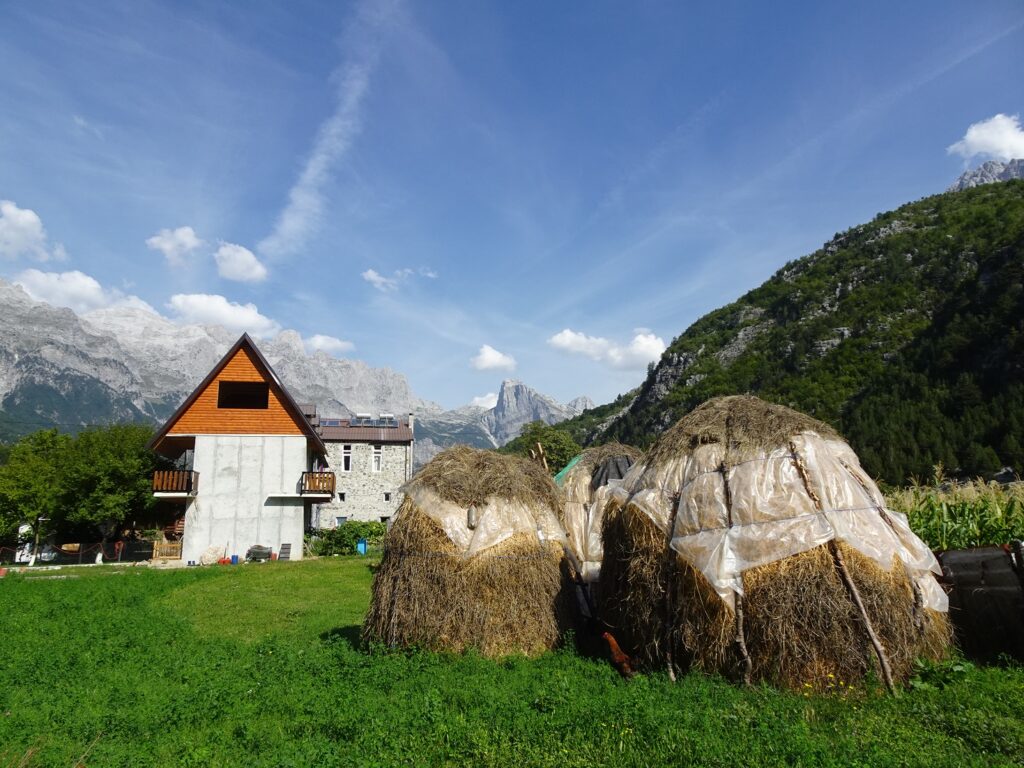
One of the advantages of getting around by public transport (apart from saving money, that is), is that it’s easier to do the popular Theth to Valbonë Hike. We tried to find a way to do it with our rental car, but ended up skipping it on this trip, as it was too much hassle to find a way to get back to Theth to pick up our car.
You can have a look at the best current options below.
If you do decide to rent a car and want to cross Lake Koman, make sure that you’re actually allowed to take your car on the ferry, as a lot of the companies have weird rules about this. Some only allow SUVs, while others won’t allow you to use the ferry at all, so make sure to read up on this before settling on a company.
Guided Tours of Albania
If you’d like to explore Albania without the hassle of organizing your own transport, accommodations and experiences, there are tons of guided tours of the country available, starting from 3 days to two weeks. Have a look below for some options.
A Ten Day Itinerary for Northern Albania
Day 1: Drive to Shkodër via Patok Lagoon and Rozafa Castle
The best springboard for trips into the mountains of Northern Albania is Shkodër, but when making your way there from the airport or Tirana, it’s worth taking a side trip or two along the way.
About halfway along the coast, a short detour leads to Patok Lagoon – a pretty little wetland dotted with wooden boardwalks, fishing huts and some restaurants built on stilts. If you want to try some seafood, we can really recommend Restaurant Reni, where you sit in little air-conditioned huts over the lagoon while watching the seabirds glide over the lagoon.
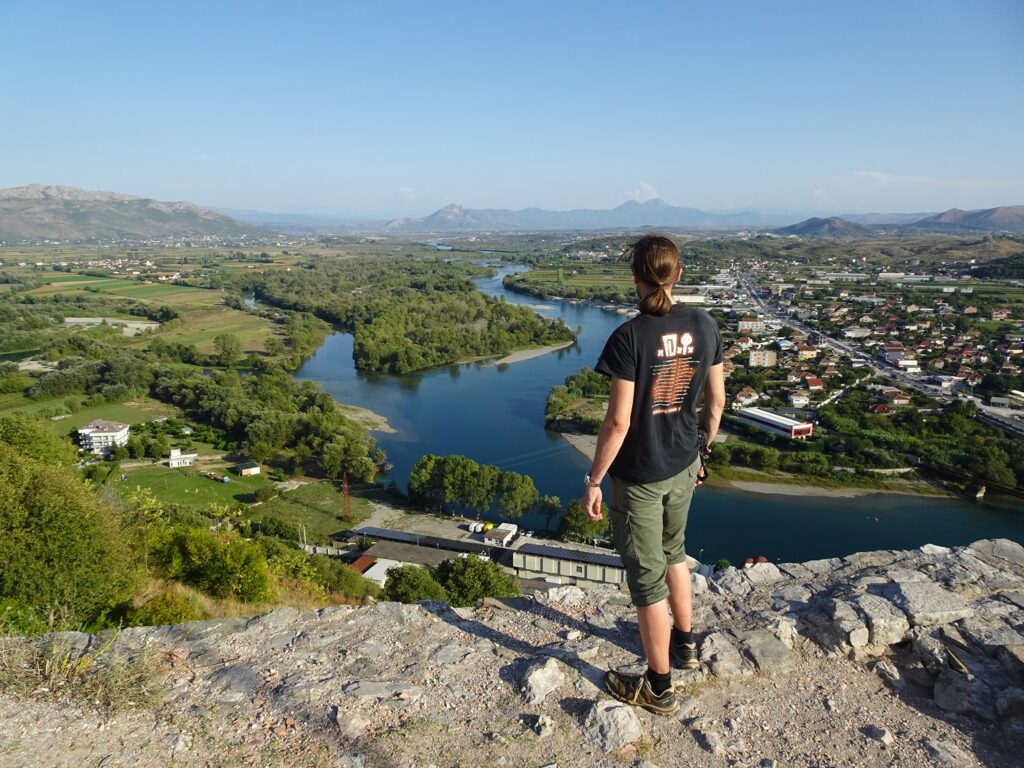
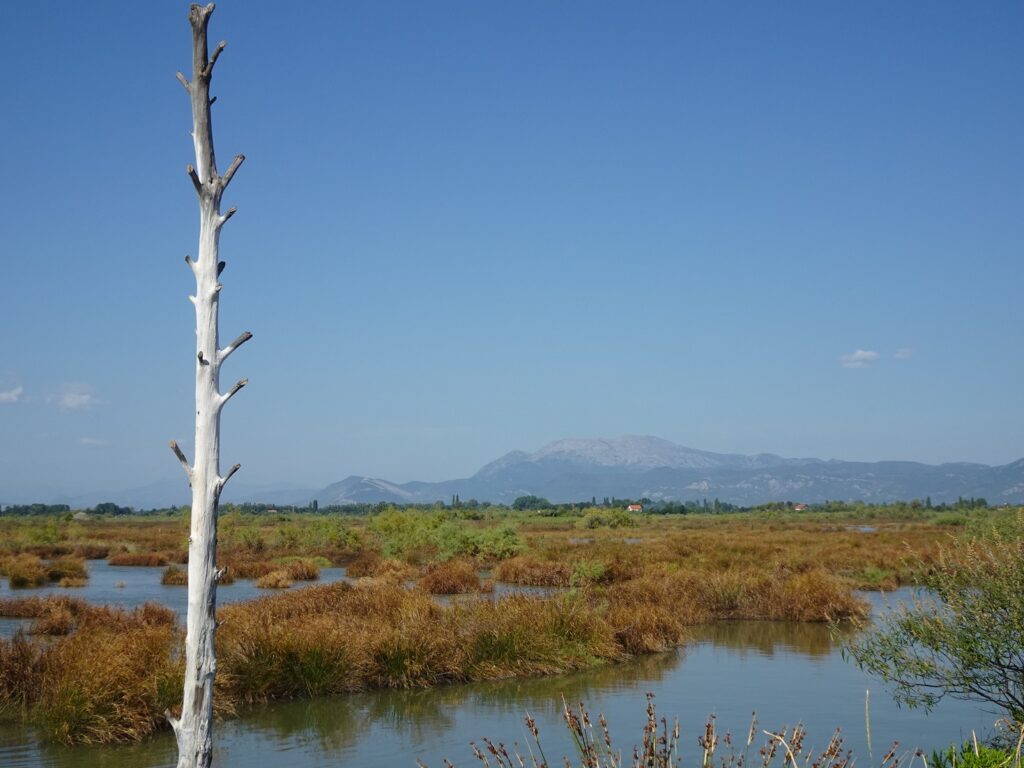
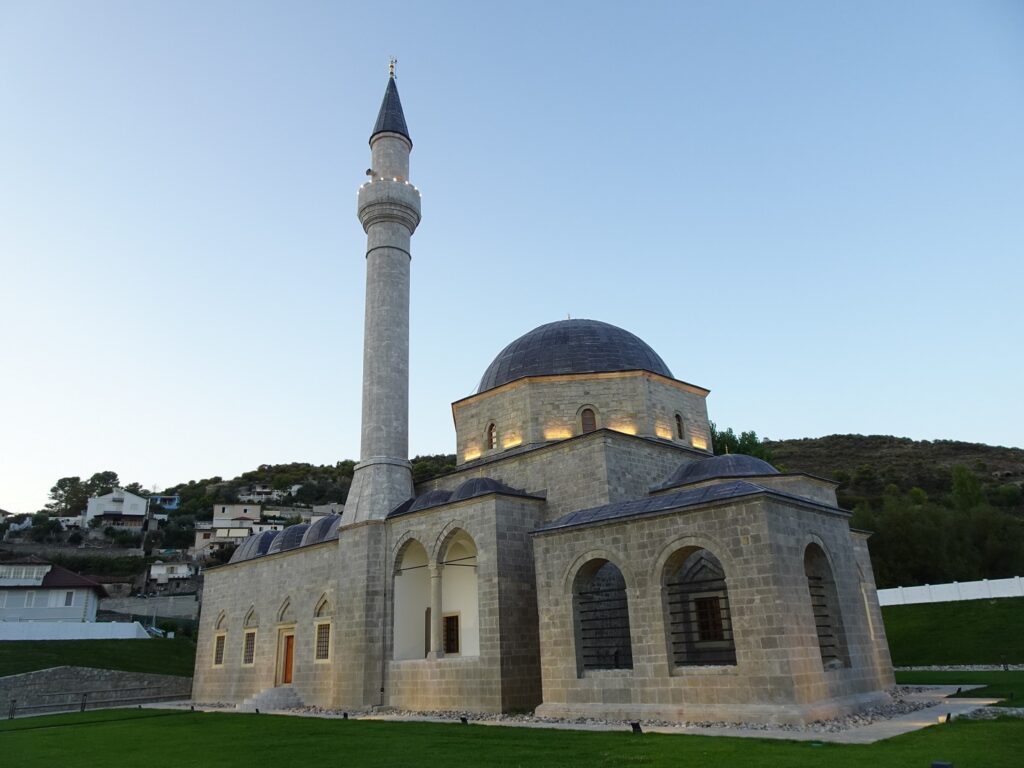
From there, you can continue north to Shkodër to explore Rozafa Castle, which sits on a hill overlooking the city and Lake Shkodër. The ruins themselves are impressive enough, but in my opinion, it’s the panoramic view that really makes it worth the climb, with the Drin and Buna Rivers flowing together in the beautiful plains below the castle hill.
Finally, it’s also worth checking out the pretty 18th-century Lead Mosque at the foot of the hill, before settling in for the night. If you have your own set of wheels, I recommend staying in small Shirokë Village on the southern shore of the lake a few kilometres west of Shkodër.
Day 2: Shkodër
Shkodër is one of Albania’s oldest cities and in my opinion also one of its prettiest. It pays to spend a full day here, as there’s plenty to see, plus you should set aside enough time to stop in a couple of the city’s many cafés.
We especially liked Shkodër’s museums, which are all quite small, but interesting nonetheless. The Marubi National Museum of Photography was one of my favourites – it houses an archive of old Albanian photographs dating back to the 1850s and gives a good impression of what the city and its surroundings looked like in the 19th century.
The Historical Museum, located in a traditional Ottoman-style house, has some interesting displays about local culture and a beautifully preserved traditional sitting room.
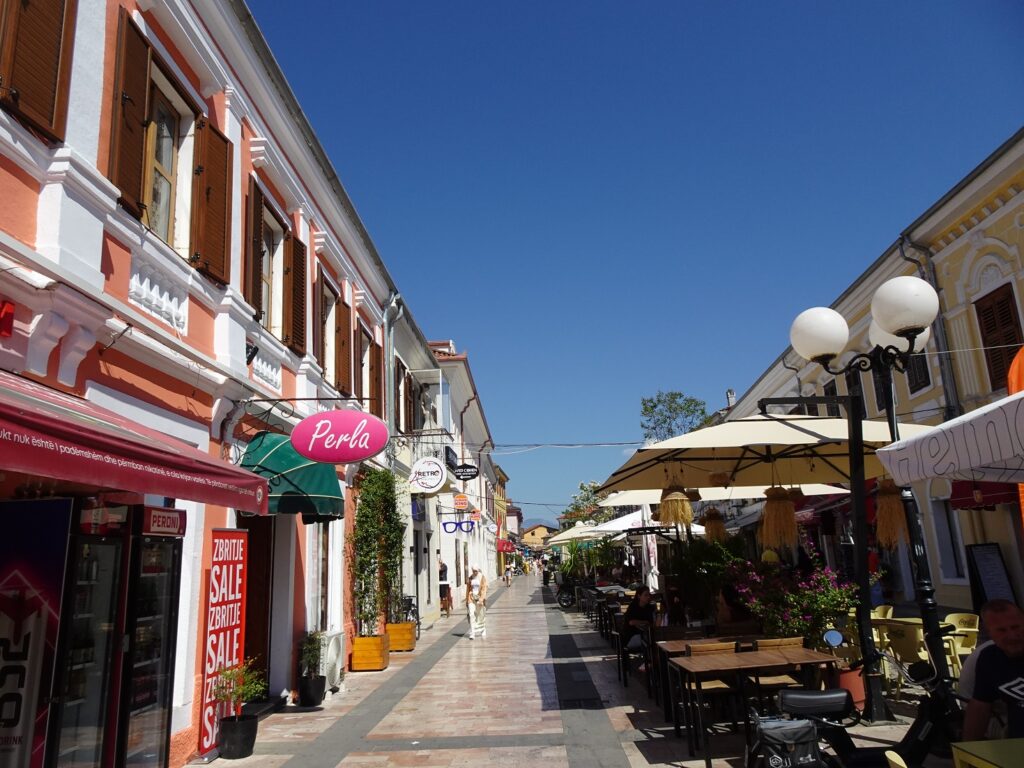
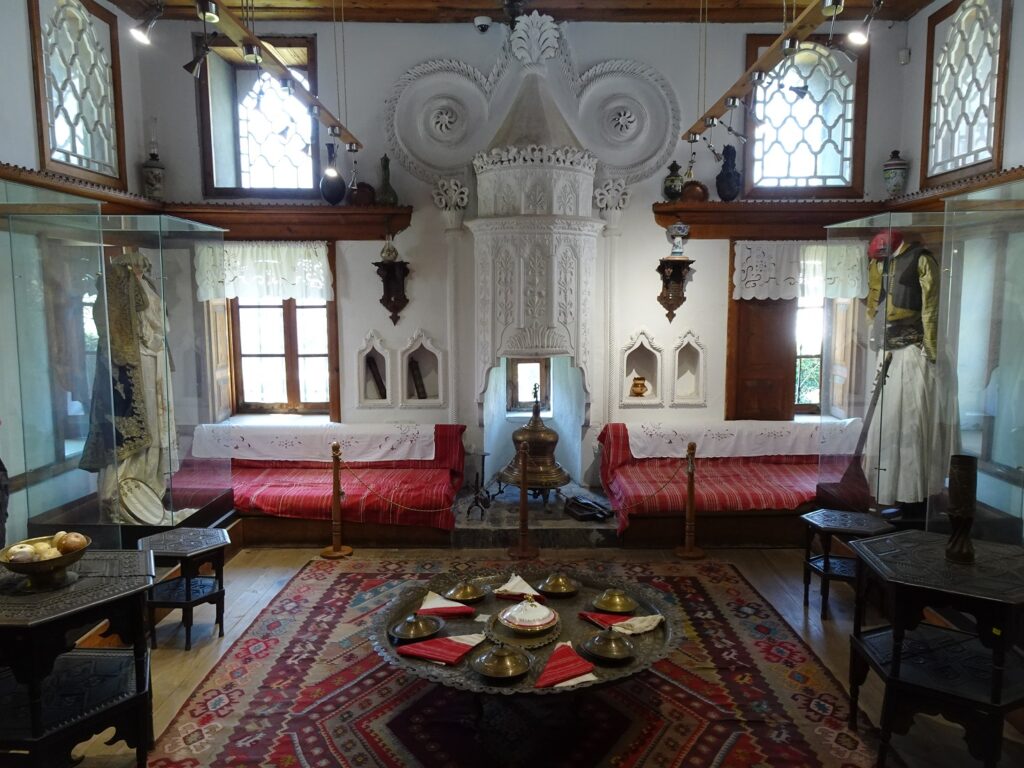
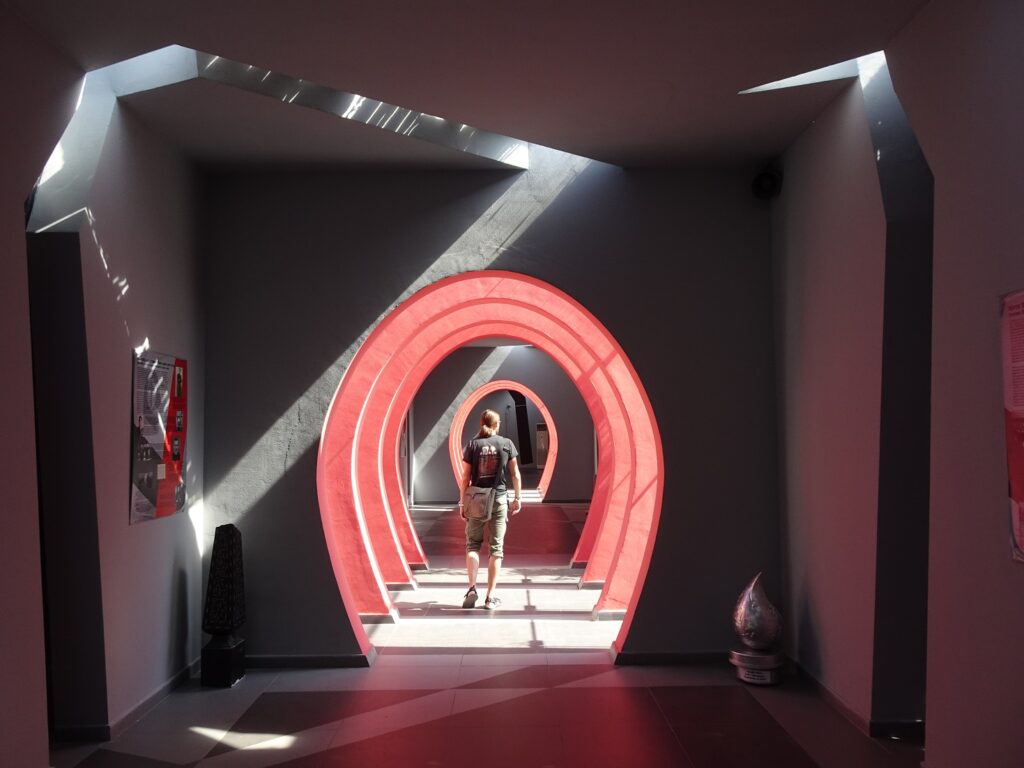
Not so beautiful, but definitely important to visit, is the Site of Witness and Memory, which deals with the imprisonment and torture of Orthodox Priests and other perceived enemies of the restrictive Hoxha Regime in the second half of the 20th century. It’s located in the former local headquarters of the Secret State Police.
Otherwise, it’s just fun to walk through the city centre’s cobbled streets, many of which are still flanked by Ottoman-Style buildings from the 19th century and start really getting really lively in the evening when all the bars and restaurants fill up.
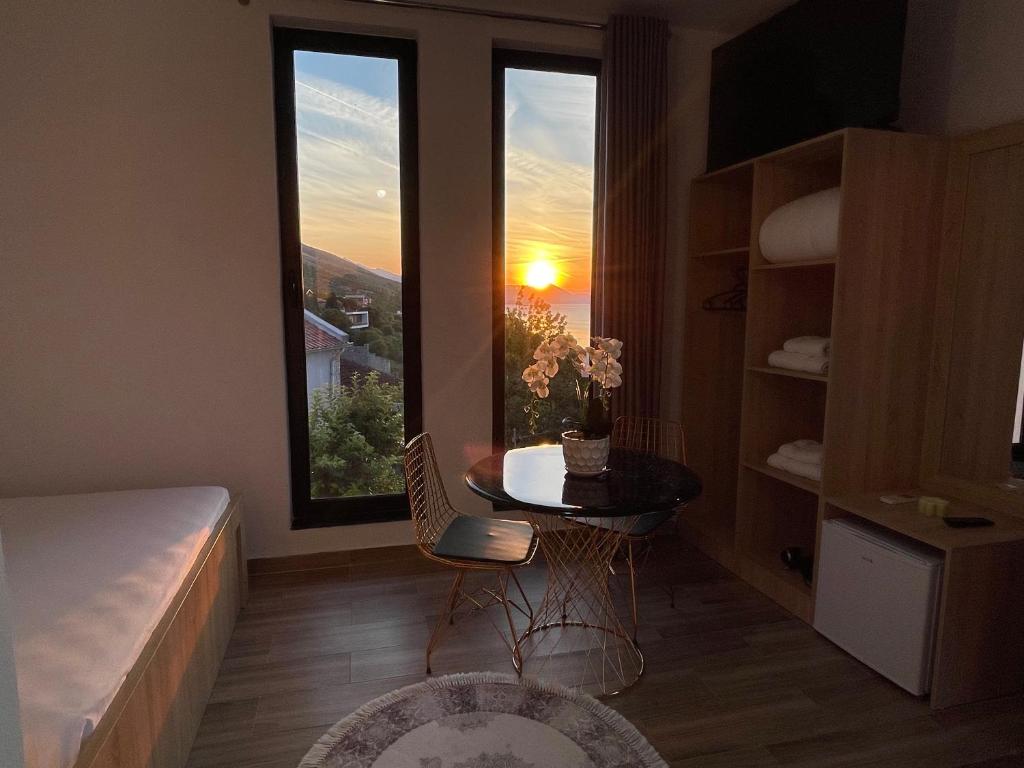
Shkodër Hotel Tips
Budget: Las Palmas Guesthouse or Four Generation Hotel in Shirokë (pictured)
Midrange: Hotel Colloseo & Spa
Luxury: Nicolaus Hidden Gem Villa
.
Day 3: Ura e Mesit, Drisht and Drive to Theth
Before heading into the mountains, it’s worth checking out a couple of spots around Shkodër. About 10km northeast of town stands Ura e Mesit, a really well-preserved Ottoman stone bridge crossing the Kir River (which unfortunately was completely dry, when we were there in September).
It’s one of the best-preserved Ottoman-era bridges on the Balkans and makes for a great photo stop, but it’s also popular with tour groups, so it’s a good idea to come here in the morning before they show up.
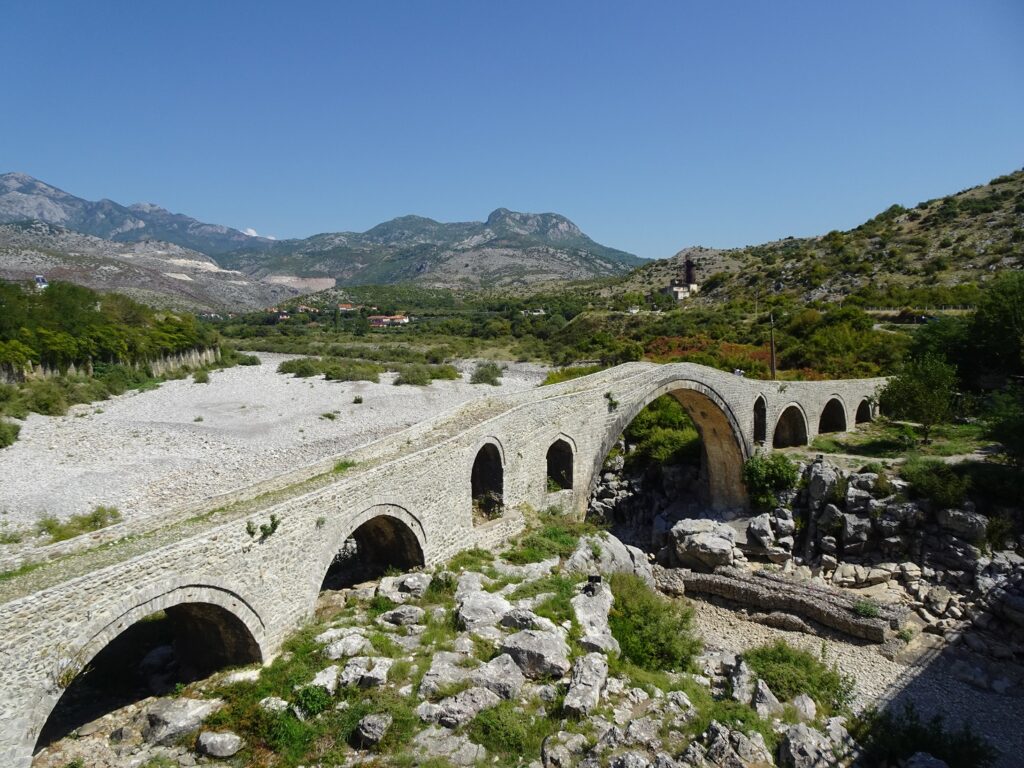
A few kilometres farther east along the small road are the ruins of Drisht, a medieval fortress on a hillside overlooking the valley. There’s not a huge amount left to see, but the views down into the Kir Valley absolutely blew us away. That said, climbing up to the ruins isn’t easy, as there is no discernible trail and we had to scramble across lots of sharp rocks and squeeze past thorny bushes to reach the top.
In the early afternoon, you should continue towards Theth, the most famous village in the Albanian Alps. The road from Shkodër to Theth used to be notoriously bad, but in recent it has been paved completely, so now you’ll only have to deal with lots of serpentines and the occasional herd of cows or sheep on the road.
Once you’ve arrived in the beautiful Theth Valley, I recommend having an early dinner and settling in for the night, so you can get up early the next day to beat the crowds.
Day 4: Theth Valley
Spending a full day in Theth gives you time to explore the village, as well as some of the surrounding nature. The classic route is the hike to the tall, narrow Grunas Waterfall, which takes a little under an hour from the valley and then to continue on to the Blue Eye of Theth (Syri i Kaltër), which takes about 2 more hours (one-way).
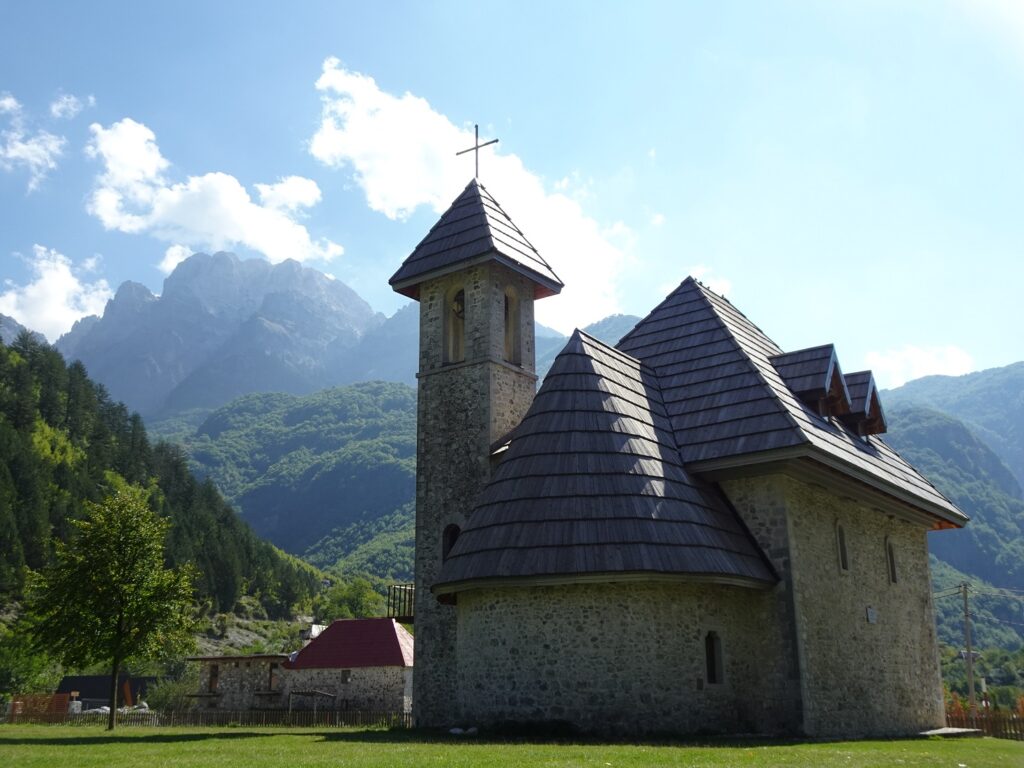
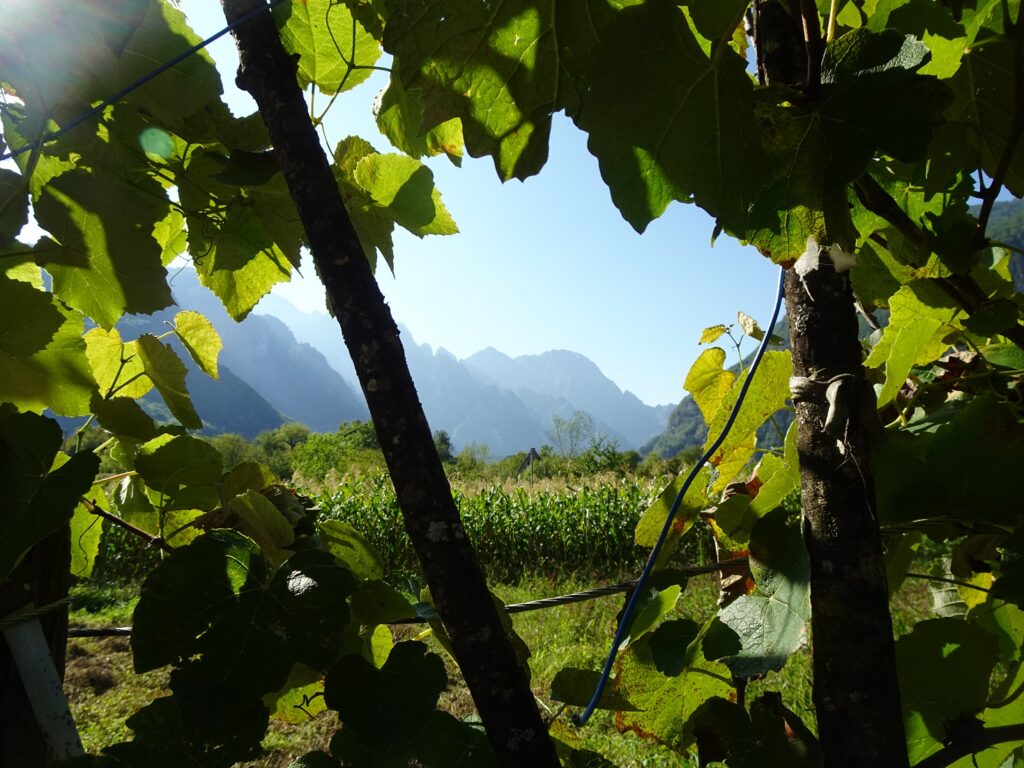
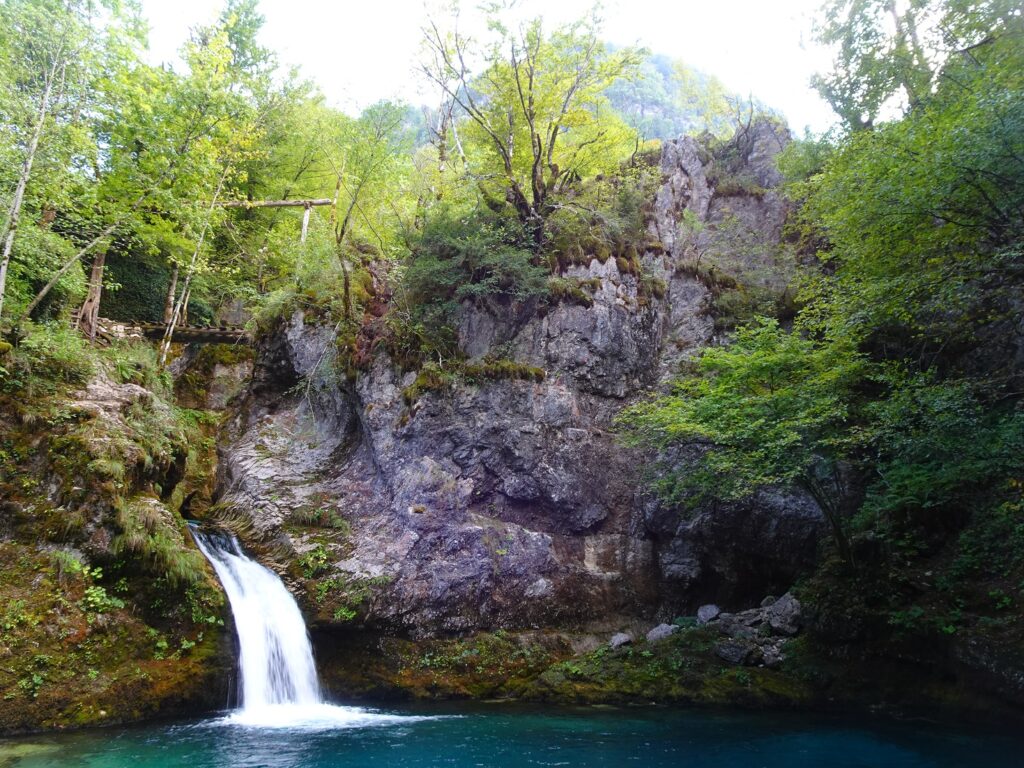
Alternatively, the road to the Blue Eye trailhead is now also paved, so you could also drive there, but the hike through the Lumi I Thethit Gorge is absolutely gorgeous, so I recommend walking at least part of it.
In any case, you should set off early, as both Grunas Waterfall and the Blue Eye are super popular, and it’s definitely more fun without tons of other people hanging around. The Blue Eye is a gorgeous mountain pool fed by a small waterfall and an underground spring.
It might look like a nice place for a swim, but you should know that it’s absolutely freezing. I managed to swim around for maybe 30 seconds before my entire body fell numb and I had to scramble to get out again 😂.
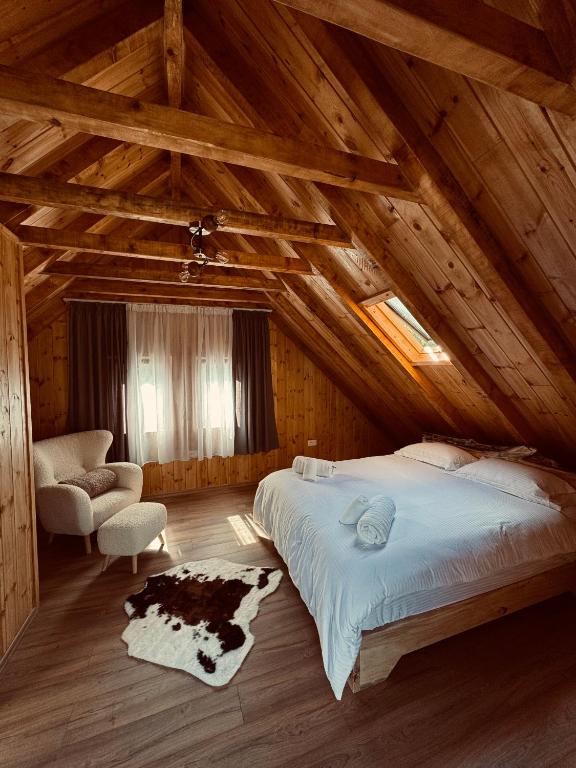
Day 5: Theth Village and Drive to Koman (or Theth to Valbona Hike)
A lot of people we met did the popular hike from Theth to Valbonë, which is only about 15km away across the mountains to the east, while making your way there via car and ferry takes 8 to 9 hours, so if you’re traveling around via public transport, this would be a good opportunity to do the hike.
We tried figuring out a way to do it, but eventually decided it was too much hassle to pick up our rental car afterwards, plus we also wanted to do the amazing ferry trip across Lake Koman, so we drove back across the mountain from Theth and onwards to Koman Village.
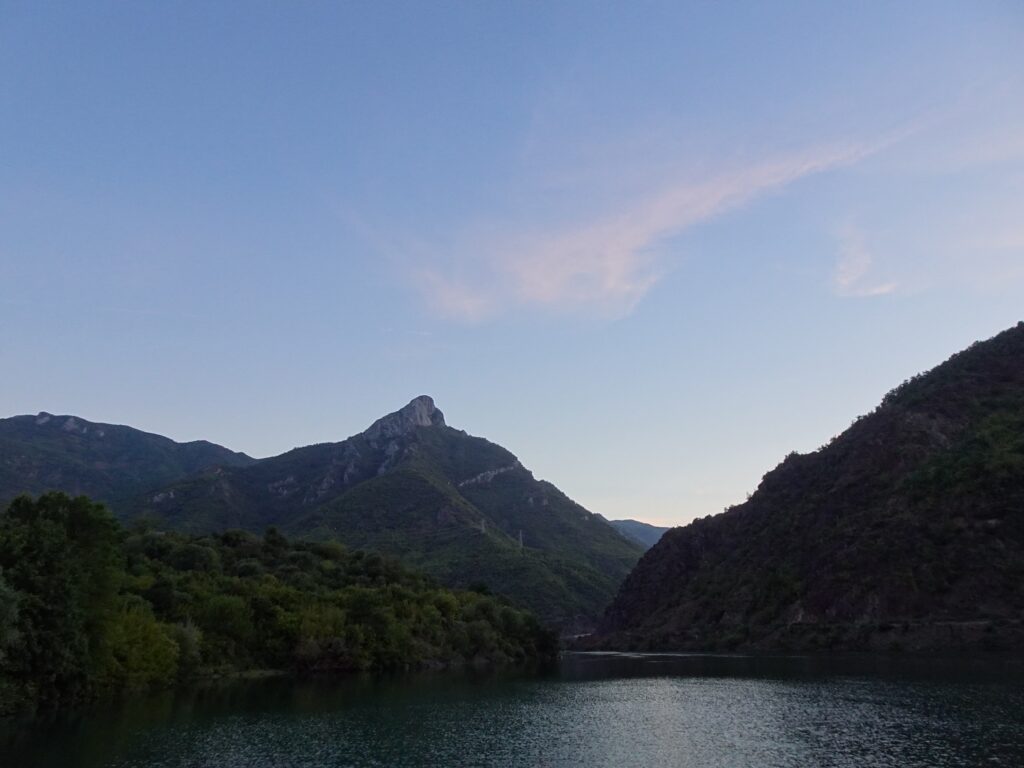
Before doing that, it’s a good idea to check out some of the smaller sights in Theth Village, in case you didn’t have a chance to do so yet. Two places that we really liked were the incredibly picturesque and photogenic stone church, as well as the 19th century Kulla e Ngujimit, a restored stone “lock-in” tower once used for protection during the time of the blood feuds.
The drive back from Theth and on to Koman takes 4 to 5 hours, so make sure to set off early enough to arrive there by daylight. When we drove there, the final 20km stretch before Koman was in a horrible condition, as the road was being repaved, but that also means that it will be in a good condition soon.
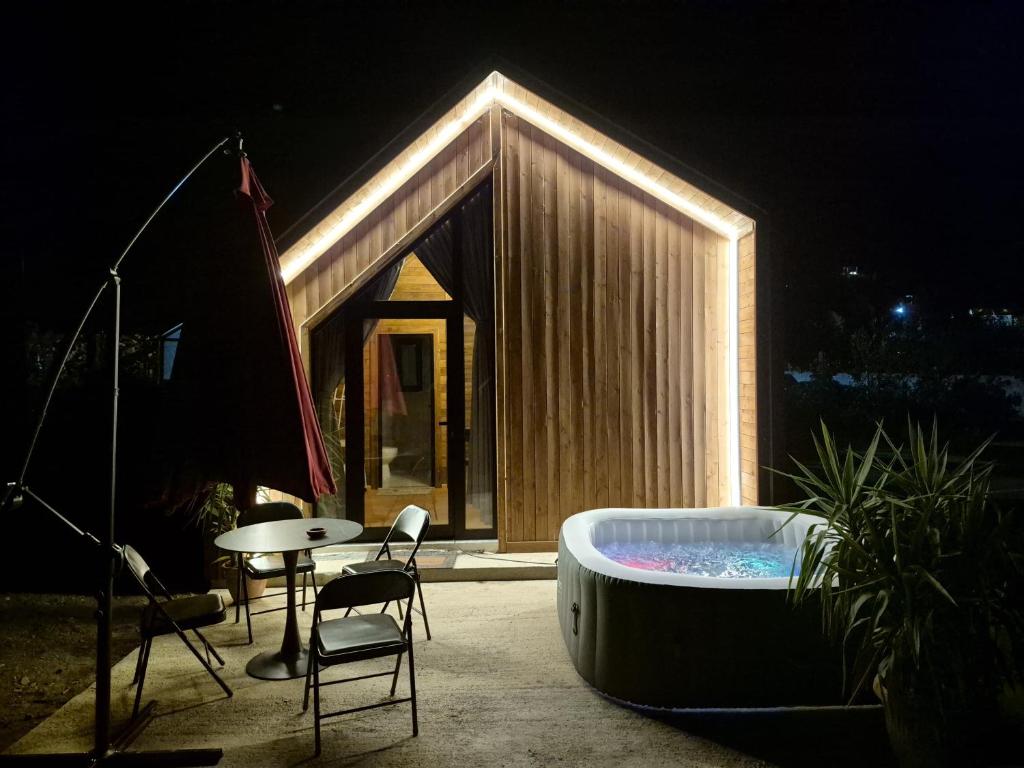
Koman Hotel Tips
Budget: Villa Franceze Agroturizem
Midrange: Guest House Panorama
Luxury: Dalmace Villas (pictured)
.
Day 6: Lake Koman Ferry and Bajram Curri
We read the Koman Lake Ferry described as one of the most beautiful boat trips in the Balkans and after taking the trip we have to agree that it’s not an exaggeration. The narrow fjord-like lake winds between steep cliffs and forested mountains, with tiny hamlets and isolated farms perched on the slopes.
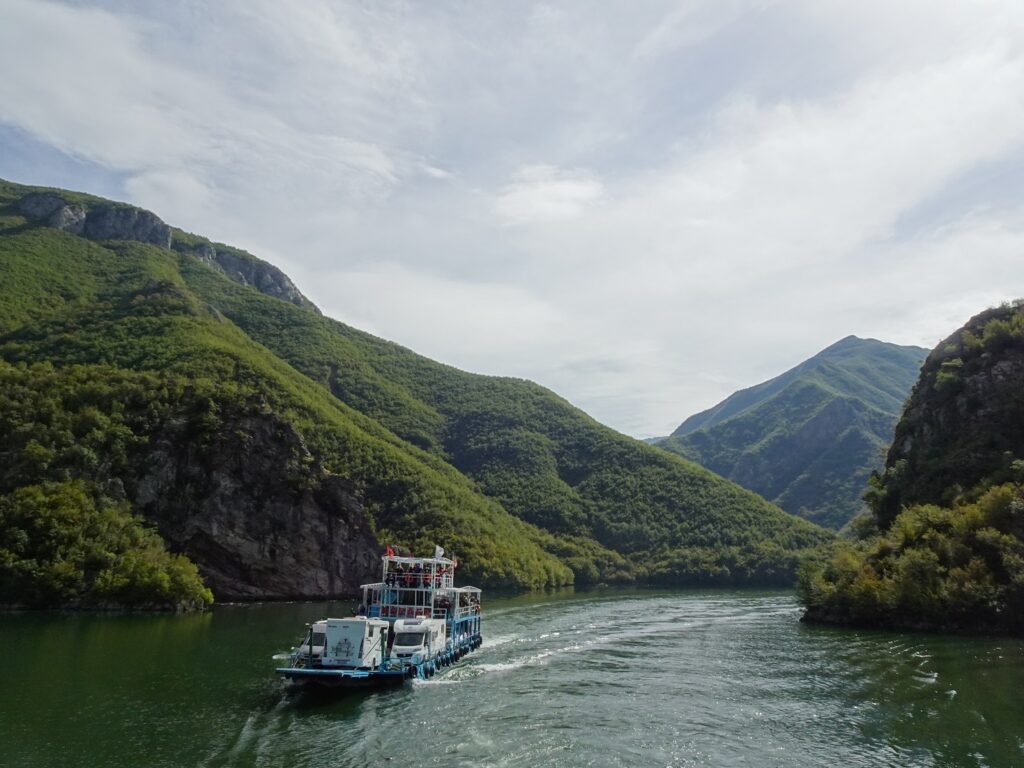
When we did the trip, the ferry left from Koman around 9am and took about 3 hours to arrive in Fierzë. Don’t forget to pre-book your spot, especially if you’re bringing a car, as spaces are very limited. Try to grab a seat on the upper deck for the best views, and bring a jacket as the wind can make it a bit chilly in the morning.
Once you reach the other side of the lake, you can drive to the small town Bajram Curri, for a coffee and a peek into the charmingly dusty museum, where I’m sure we were the first visitors in a few weeks, before continuing to the remote Valbonë Valley.
See Also: A Complete Guide to Taking Albania’s Komani Lake Ferry, With or Without a Car
Day 7: Valbonë Valley
For me, Valbonë was the most beautiful place that we came across in Northern Albania: a long, narrow valley full of little stone houses, surrounded by high peaks and dominated by the pretty river of the same name.
There are a number of hikes that start in the area, from small walks in the valley to longer scrambles up the surrounding peaks. A lot of the hikes were quite beautiful, but the trails weren’t particularly well-maintained and the difficulty was often under-sold.
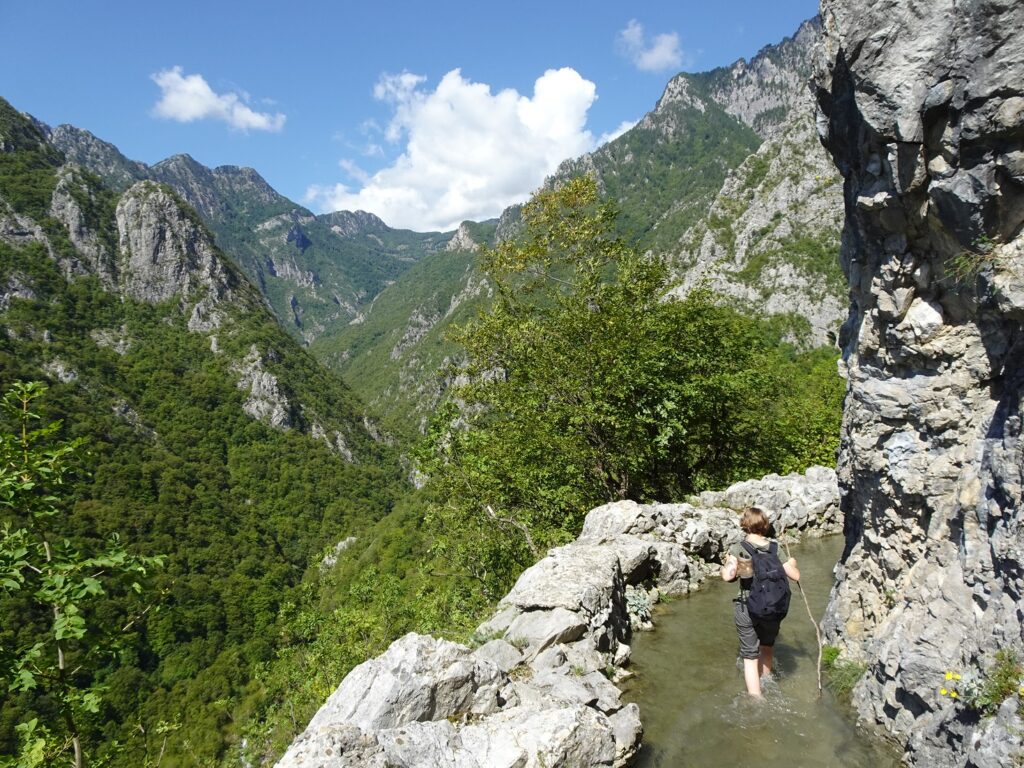
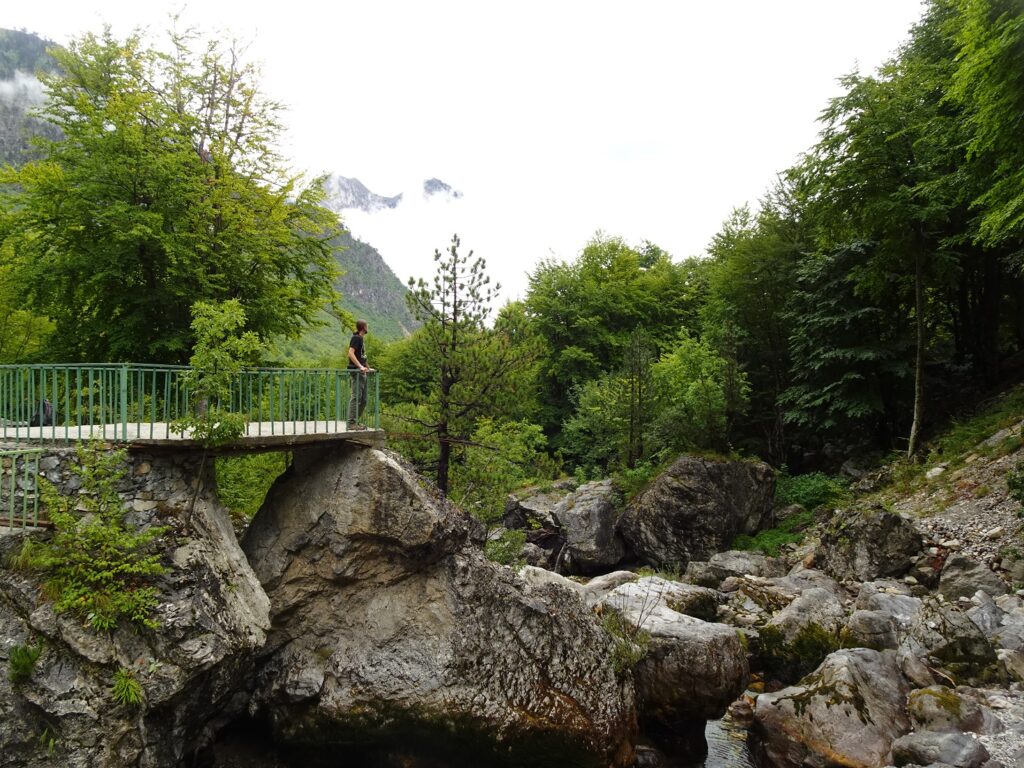
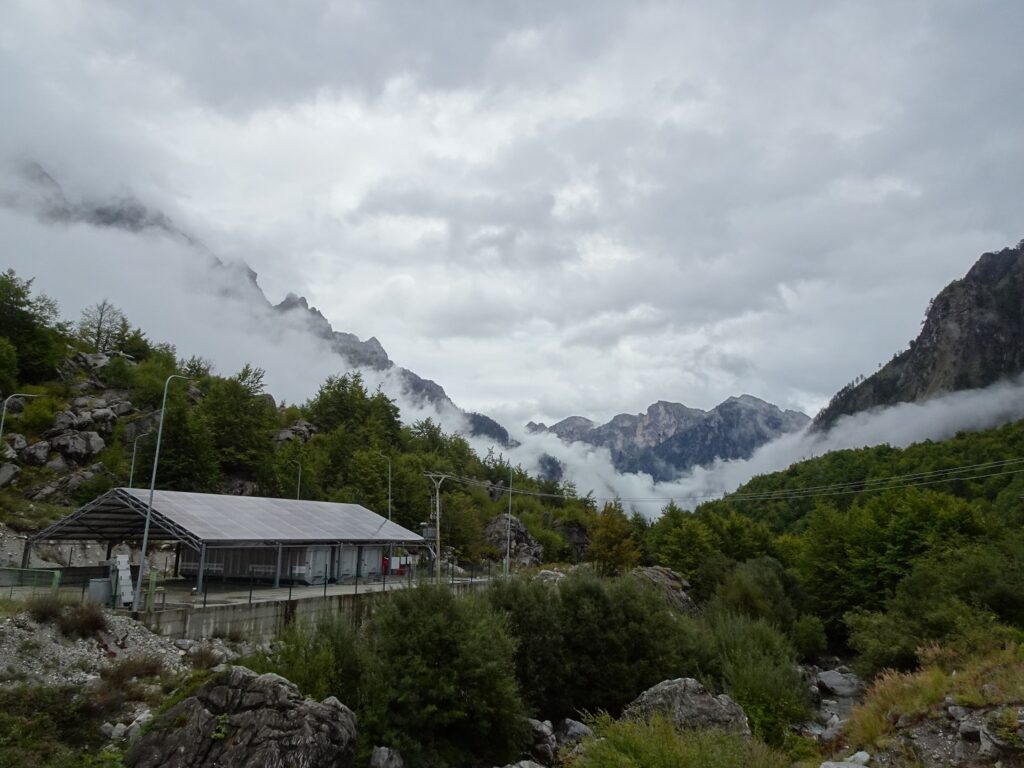
For instance, we climbed up to the impressive Dragobia Cave (more of a large rock formation than a cave), where national hero Bajram Curri supposedly took his last stand against the king’s troops. We liked the hike through the ancient beech forest, but disagreed that the steep, overgrown path with sometimes hard-to-find markings was classified as ‘easy’.
Similarly, the hike along the Begaj Canal to the UNESCO-listed Lumi i Gashit Gorge was absolutely beautiful and probably my favourite hike in the country, but led for long sections across the narrow ledge of the canal with very steep drops to one side. The sign board at the start of the hike said that the difficulty is moderate, but it’s really only possible if you don’t have any fear of heights and even then you need to be very careful.
What I’m trying to say is that it’s a good idea to do some research before setting off to find a fitting hike for you. We found it hard to find any good information about these online and there is no tourism office in the valley, but the staff at the Hotel Rilindja can give you recommendations and there is a map with all the hikes posted in the parking lot in front of the hotel.
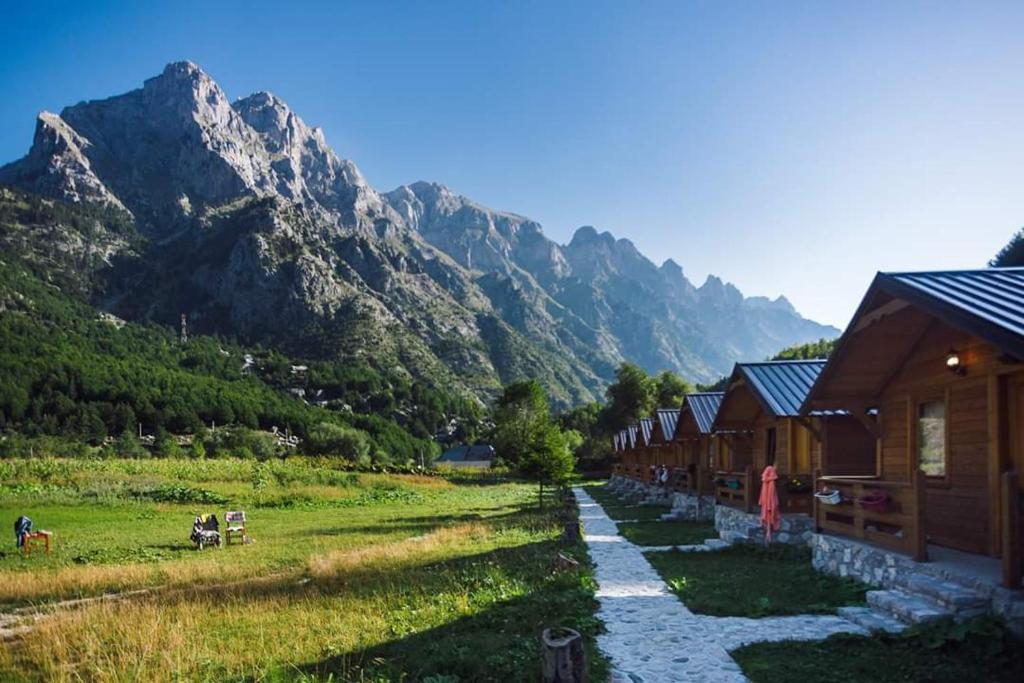
Valbonë Hotel Tips
Budget: Bujtina Arturi
Midrange: Villas Jezerca (pictured)
Luxury: Hotel Valbor
.
Day 8: Drive to Peshkopi via Kukës
The drive from Valbonë to Peshkopi is a long one – around five hours if you go via Kukës – but it’s a pretty route and we hardly met any other foreigners here, so it seems to be a part of Albania that few travellers ever see.
The landscape changes gradually from alpine valleys to rolling hills, and there are plenty of viewpoints and settlements (for instance the old mining town of Krumë) along the way that are worth a brief stop.
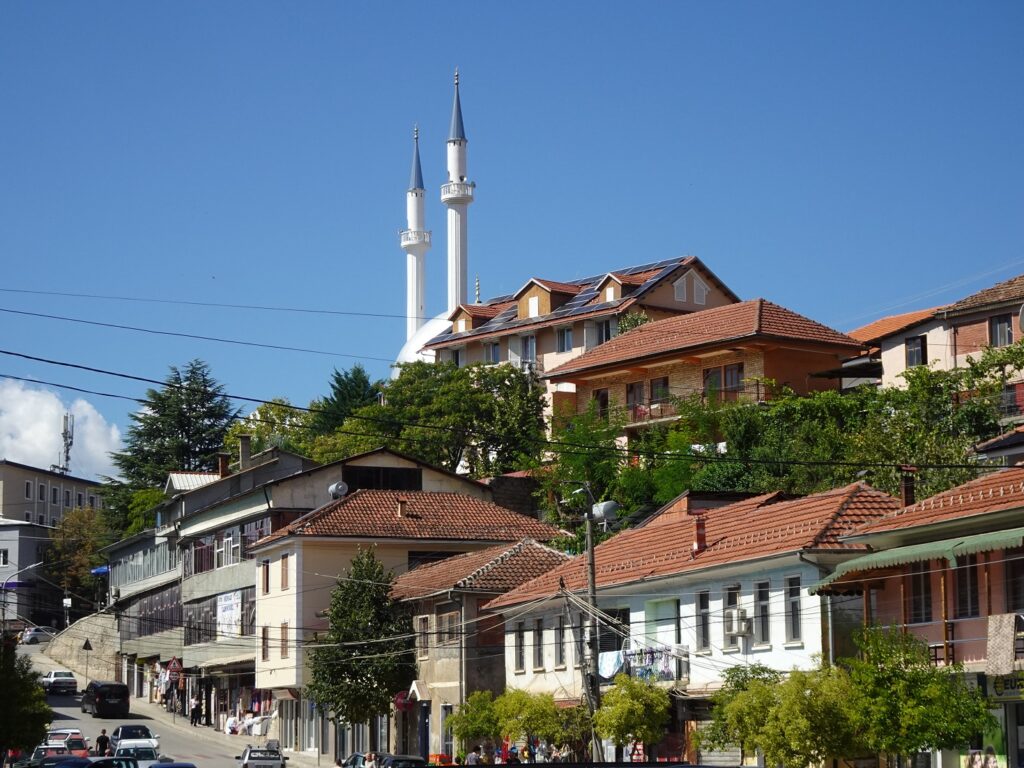
I also highly recommend stopping in Kukës and taking a tour of their ‘Underground City’ – a huge bunker complex built by the Communist government, but never used for anything but drills during its existence.
The entrance to the tunnels lies under the childhood home of local guide Afrim Cenaj, who’ll show you through part of the complex if you contact him in advance through WhatsApp (+355 68 552 0330).
Peshkopi itself is a small workaday town near the Macedonian border without any must-see sights, but it has a nice little historic centre and the small nearby village of Rabdisht is worth checking out for its historic stone houses. We based ourselves here to climb Mount Korab, Albania’s highest peak.
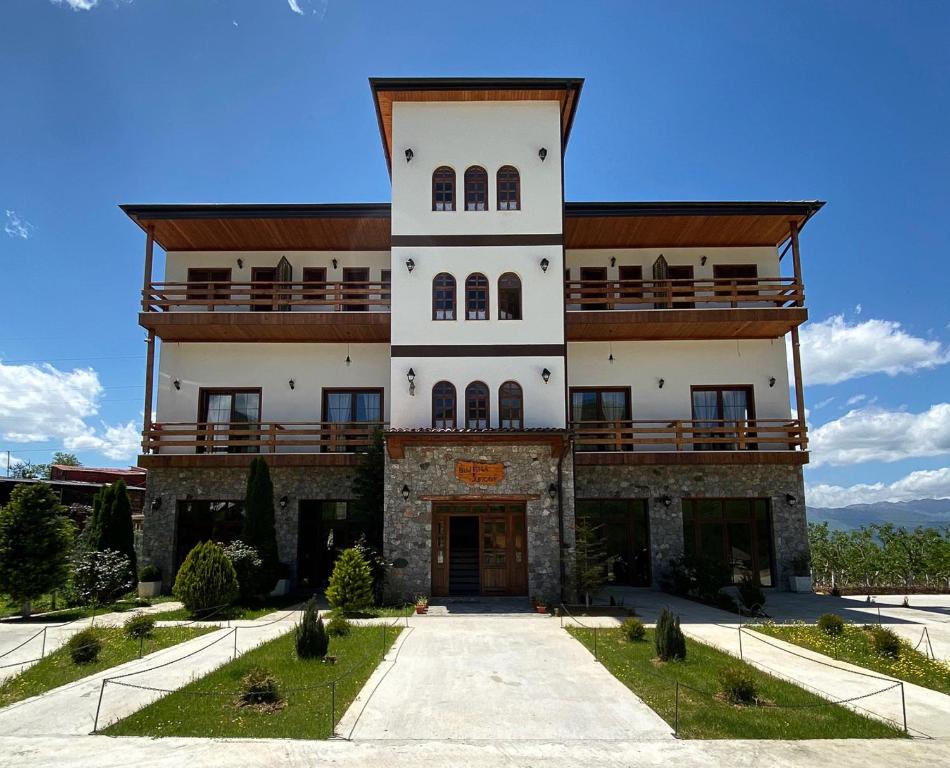
Peshkopi Hotel Tips
Budget: Hotel Kristali
Midrange: Nëna Dashuri Agroturizëm (pictured)
Luxury: Vila Darli Peshkopi Dibra
.
Day 9: Mal i Korab and Kulla Hupi
Mount Korab (2,764m or 9068ft.) is the highest peak in both Albania and Northern Macedonia, as it sits right at the border of the two countries. The easiest trailhead to climb the mountain from the Albanian side is the small village of Radomirë.
We decided to base ourselves in Peshkopi, because we also wanted to check out that city, but if you want a really early start, there are hotels in Radomirë, as well. That said, we started our hike around 9am and had the trail almost to ourselves, although we encountered many other hikers on the way back.
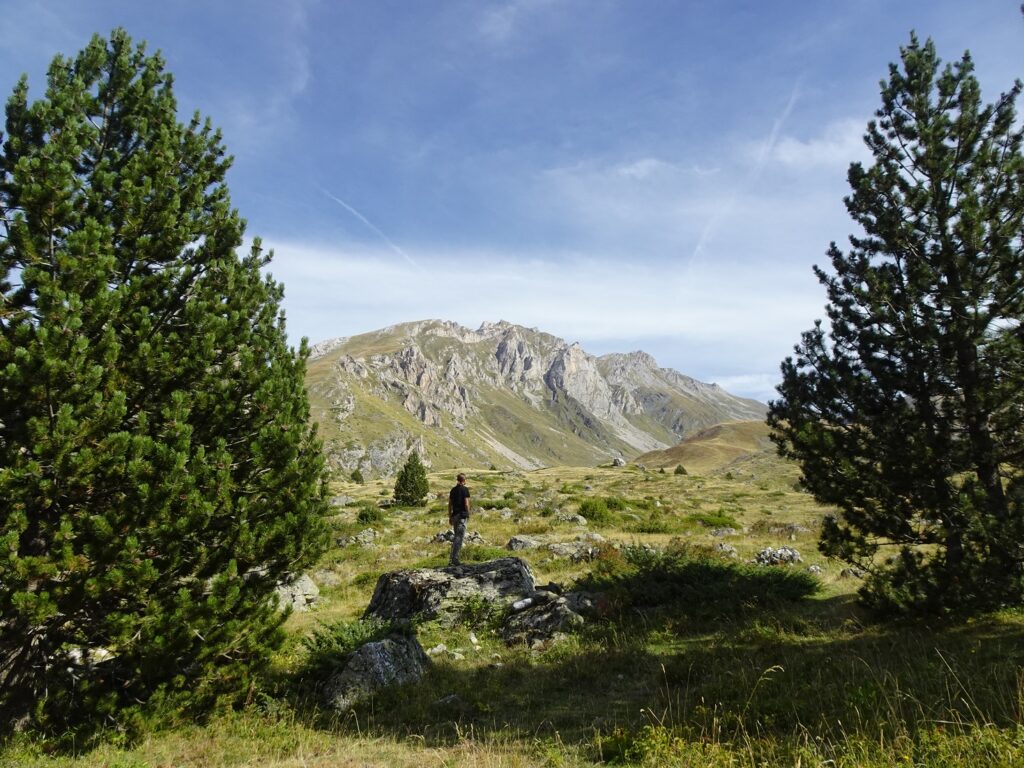
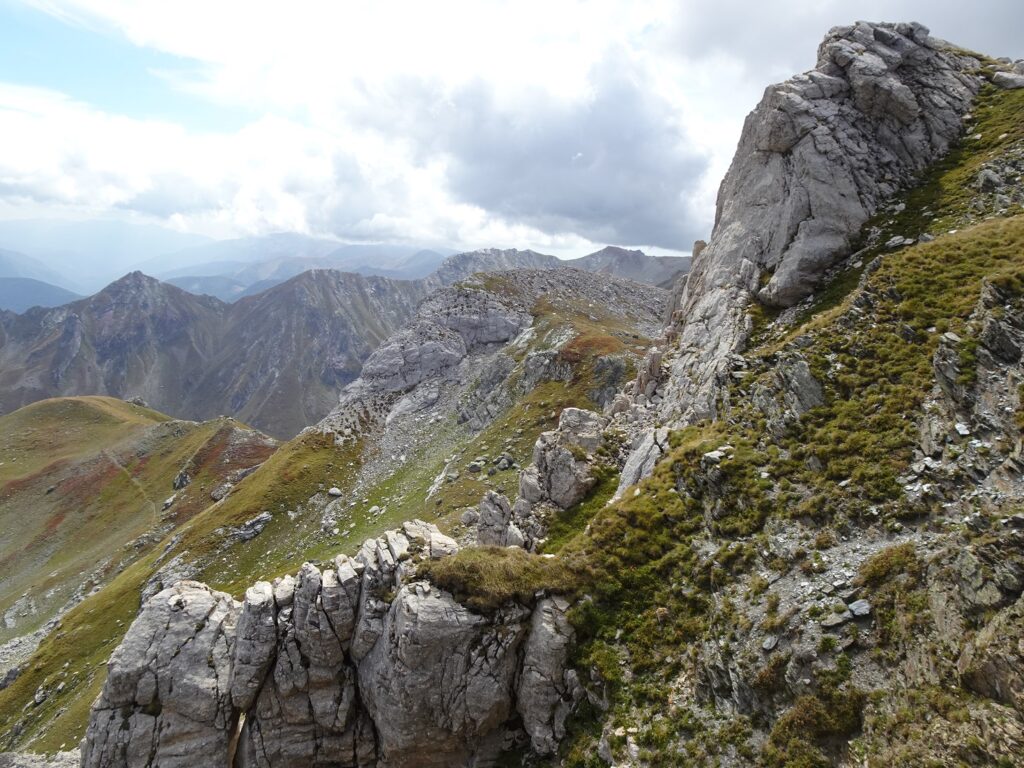
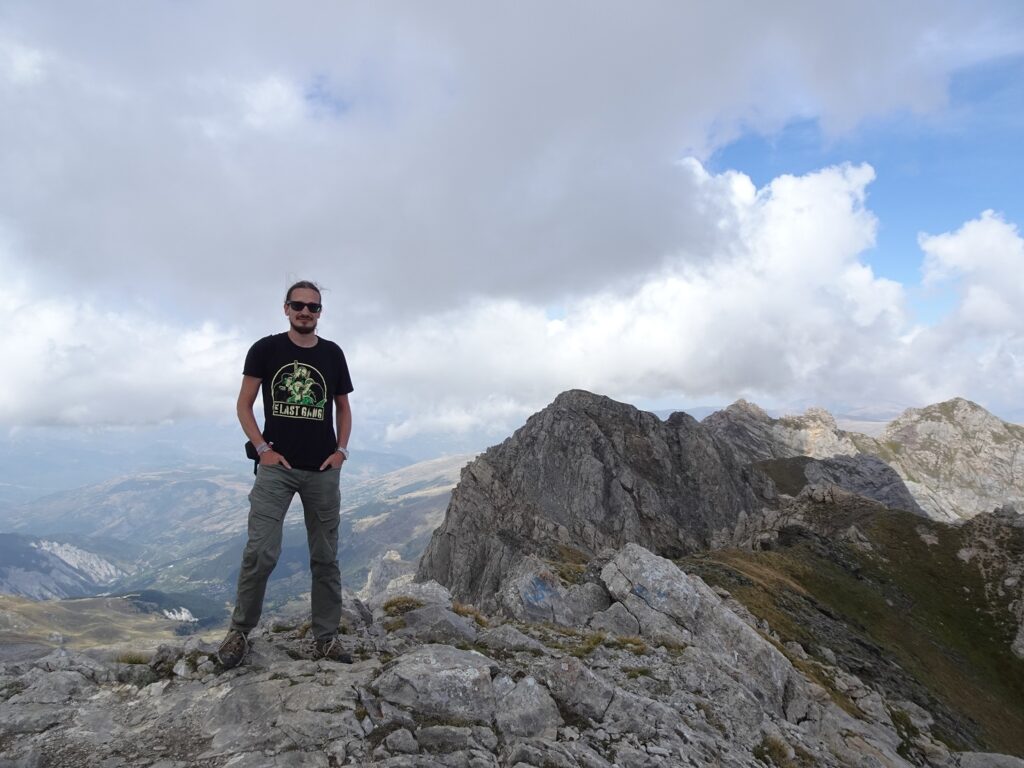
For the most part, the trail isn’t technically difficult, but it’s a steady uphill slog, so it’s still slow going. Only the final ascent to the summit requires treading a little more careful, as there’s a steepish slope to one side.
The whole hike from the trailhead to the top of Mal i Korab and back took us about 6 hours, with about half an hour on top to enjoy the amazing views back to Radomirë village and into Northern Macedonia’s Mavrovo National Park.
After the climb I recommend driving south past Peshkopi and to the tiny village of Fushë-Bulqizë, where you can stay at Kulla Hupi, a restored 200 year old stone tower house. The beautiful building and surrounding garden made this one of our favourite places to stay in the country (plus the food is amazing, too).
Day 10: Drive to Tirana via Bulquizë
The last day of the itinerary is for the drive back to the capital. I recommend a short stop in Bulquizë, a small mining town close to Kulla Hupi. It’s especially worth visiting the small museum, which deals with local ethnography and the chromium mining history (complete with a life-sized diorama of a mine shaft).
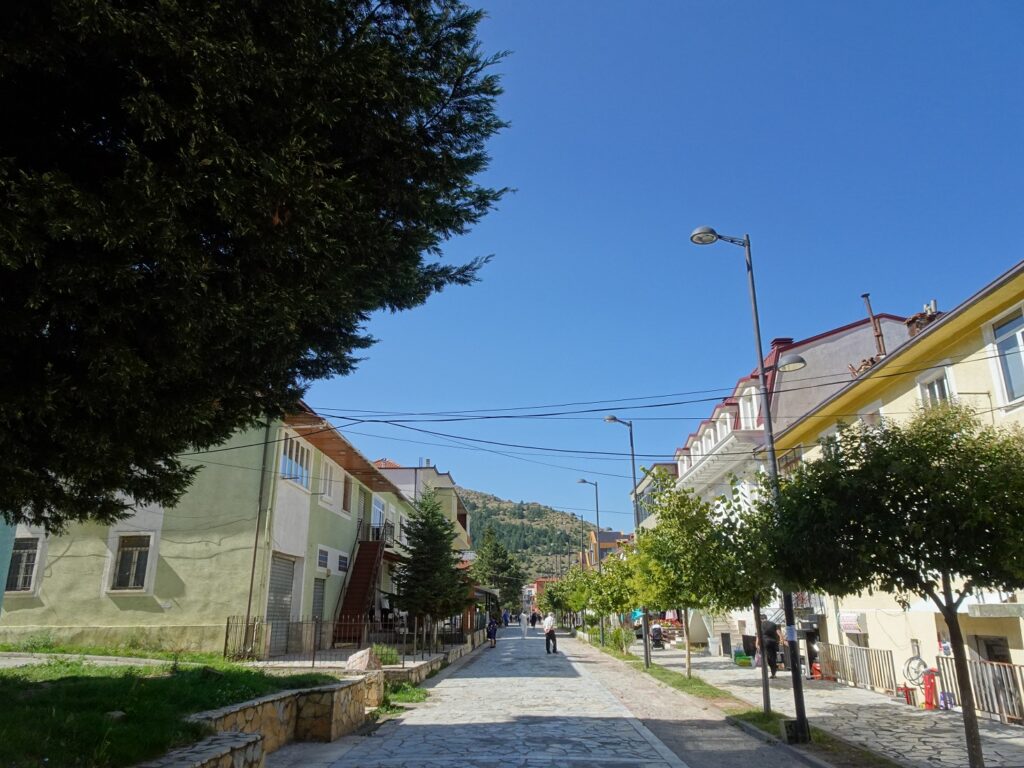
The rest of the ride to Tirana shouldn’t take more than 1.5 hours, after which you can spend the rest of your trip checking out the historic sights in the country’s cool capital continue your explorations by moving on to the southern part of the country.
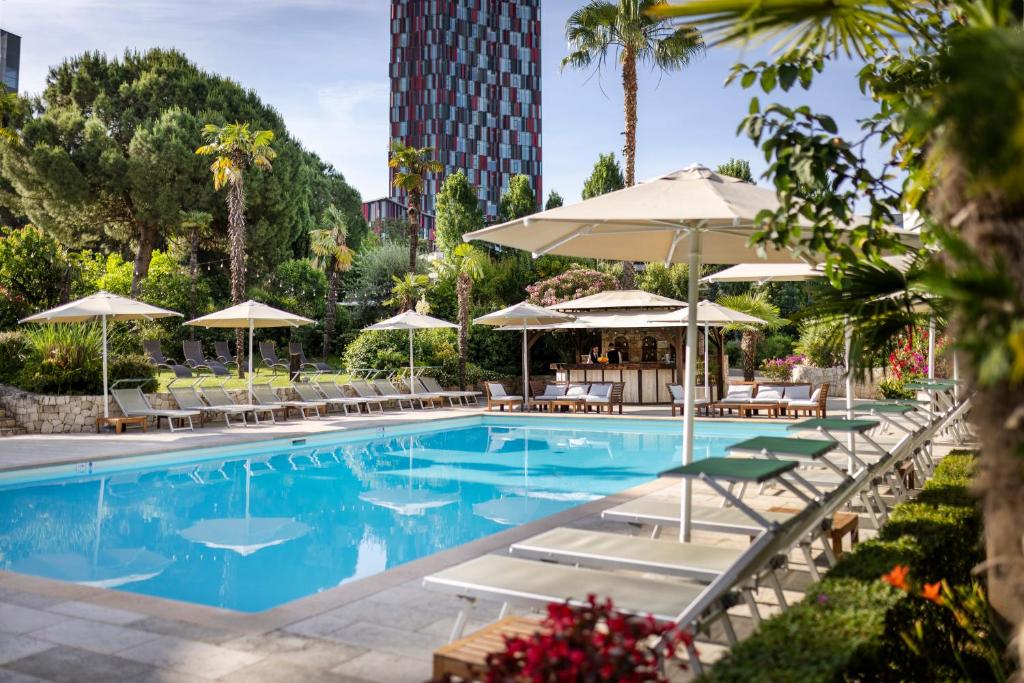
Tirana Hotel Tips
Budget: Lemon Breeze Hostel
Midrange: Rogner Hotel Tirana (pictured)
Luxury: Maritim Hotel Plaza Tirana
.
Northern Albania Itinerary Map
All of the stops on this itinerary can be found on this map of Northern Albania. The different colours denote different days of the itinerary.
See Also
